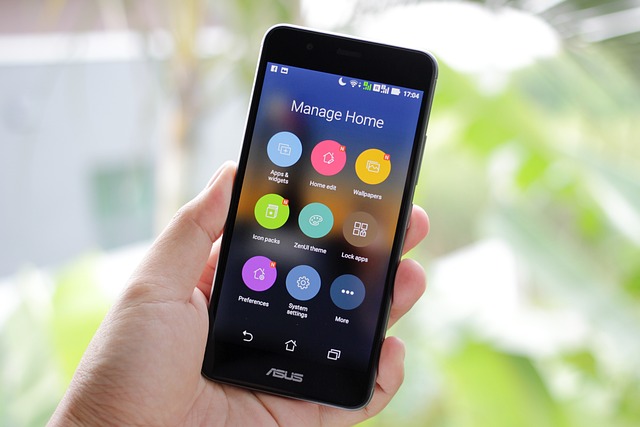Designing for mobile users' needs is crucial for success in today's digital world. Mobile-friendly design prioritizes simplicity, speed, and ease of use, focusing on responsive components, clean navigation, and optimized content layouts. This approach enhances accessibility, reduces bounce rates, and boosts search engine rankings, fostering higher user engagement and satisfaction across diverse devices. Testing and iterative development are essential to ensure a seamless experience for all users.
In today’s mobile-first world, a seamless user experience on smartphones and tablets is non-negotiable. Mobile-friendly web design isn’t just about making your site accessible; it’s a critical strategy for engagement, conversion rates, and business success. This comprehensive guide delves into the key aspects of creating effective responsive designs, from understanding mobile users’ behavior to optimizing load times and ensuring accessibility. We explore best practices that enhance SEO and drive tangible business results.
Understanding Mobile Users' Behavior

Understanding mobile users’ behavior is crucial for creating a successful mobile-friendly design. With the majority of internet traffic now coming from mobile devices, it’s essential to adapt web design practices to cater to this audience. Mobile users often have different expectations and behaviors compared to desktop users; they prefer simplicity, speed, and ease of use. They typically browse on-the-go, demanding instant access to information and quick loading times.
Designers should consider how users interact with their devices, focusing on intuitive navigation, optimized content layouts, and responsive images that adapt to various screen sizes. By understanding these behaviors, developers can create a seamless user experience, ensuring mobile users find what they need effortlessly, leading to higher engagement and satisfaction.
Key Components of Responsive Design

Creating a mobile-friendly design involves a strategic approach to ensure optimal user experience across various devices, from smartphones to tablets and desktops. Responsive design is achieved through several key components that work together seamlessly. One of the fundamental aspects is media queries, which allow developers to apply unique CSS styles based on device characteristics like screen size, orientation, and resolution. This ensures content adapts gracefully, maintaining legibility and functionality.
Another crucial component is flexible grid systems and fluid images. Responsive grids accommodate different screen sizes by adjusting their layout, while fluid images resize proportionally without compromising quality or visual appeal. Additionally, developers should prioritize a clean and simple navigation structure, utilizing touch-friendly buttons and clear hierarchical menus to facilitate easy exploration. These components collectively contribute to a mobile-friendly design that provides users with a consistent, intuitive, and engaging experience regardless of their device.
Creating Adaptable Layouts

In the realm of mobile-friendly design, creating adaptable layouts is paramount. Web designers must embrace responsive design principles to ensure that websites seamlessly adjust to various screen sizes and resolutions, from smartphones to tablets and desktops. This involves utilizing flexible grid systems, flexible images, and media queries to maintain a user-friendly experience across different devices.
By implementing these strategies, designers can create layouts that dynamically rearrange content, ensuring legibility and usability on smaller screens. Adaptable design not only enhances accessibility but also improves loading times and reduces bounce rates, making it a key component in delivering an optimal mobile-friendly experience that keeps users engaged and satisfied.
Optimizing for Faster Load Times

In the realm of mobile-friendly design, optimizing for faster load times is a key component. Websites that take longer to load can significantly impact user experience, especially on mobile devices with varying and often limited data plans. This is where efficient coding practices, optimized images, and content delivery networks (CDNs) come into play. By employing these techniques, web designers can ensure that pages render swiftly, keeping visitors engaged and reducing bounce rates.
A mobile-friendly design that prioritizes speed not only enhances user satisfaction but also contributes to better search engine rankings. Google, for instance, favors sites with quicker loading times in its mobile search results. Thus, investing time in optimizing load speeds can pay dividends in terms of both user retention and online visibility.
Ensuring Accessibility Across Devices

Creating a mobile-friendly design isn’t just about ensuring an optimal user experience on smartphones; it’s crucial for accessibility across all devices. This includes tablets, desktop computers, and even new emerging technologies. A truly mobile-friendly design adapts to different screen sizes and orientations, making content easily readable and interactive regardless of the device used.
Implementing responsive web design techniques, such as flexible layouts, media queries, and scalable images, allows for a seamless transition between devices. This means users can navigate, engage with, and access your website’s functionality without frustration or compromise, fostering an inclusive digital environment that accommodates diverse user needs.
Testing and Iterating on Different Screens

Testing and iterating are vital components of creating an effective mobile-friendly design. Developers should utilize various devices and emulators to ensure a seamless user experience across different screen sizes and resolutions. This process involves checking for proper layout adjustments, touch gestures’ responsiveness, and fast loading times. By simulating real-world scenarios, designers can identify and rectify issues early on.
Iterative development allows for constant refinements, ensuring the mobile-friendly design meets the unique challenges of various smartphones and tablets. Regular testing should consider different operating systems and screen dimensions to deliver a consistent and high-quality interface, enhancing user engagement and satisfaction.
Best Practices for Mobile Navigation

Creating a seamless mobile-friendly design involves prioritizing user experience and intuitive navigation. Best practices include simplifying menu structures, ensuring touch-friendly interactions, and adopting a responsive layout that adapts gracefully across various screen sizes. A well-designed mobile navigation should minimize scrolling and tapping efforts, allowing users to effortlessly access content and functionality.
Implementing clear call-to-actions (CTAs), strategically placing search bars, and incorporating gestures like swiping and pinching can further enhance the user experience. Regular testing on different devices and browsers is essential to ensure consistent performance and address any usability issues early in the design process for a truly mobile-friendly design.
The Impact on SEO and Business Success

A mobile-friendly design is no longer a luxury but an indispensable aspect of modern web design, given the ubiquitous use of smartphones and tablets for online activities. Google, in particular, has been at the forefront of promoting mobile-first indexing, meaning that search engine results are primarily based on a site’s mobile version. This shift has significant implications for SEO strategies, as sites with mobile-unfriendly designs risk lower rankings, fewer visits, and ultimately, reduced business success.
With a mobile-friendly design, businesses can enhance user experience by ensuring their websites load quickly, are easily navigable, and display content optimally on smaller screens. Such features not only improve bounce rates and session durations but also encourage users to engage more deeply with the site’s offerings. Consequently, search engines like Google recognize these positive signals and reward mobile-optimized sites with higher rankings, driving more organic traffic and potentially increasing conversions and sales.
